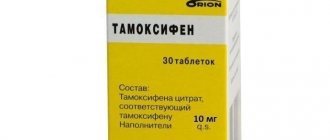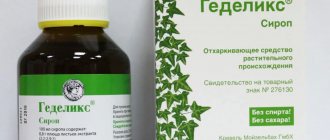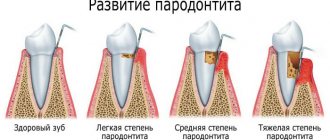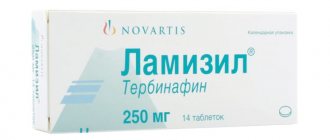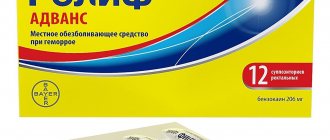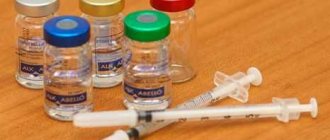Aspergillosis is a dangerous fungal disease characterized by the spread of mold spores in various organs and tissues. Usually the target organ is the lungs, but the digestive system, skin, and ENT organs may be affected.
The disease is deadly, but timely assistance can prevent its progression and the development of complications.
How does aspergillosis develop?
In many countries of the world in recent years, there has been an increase in mycoses of internal organs, in particular bronchopulmonary aspergillosis. The most common causative agent in humans is Aspergillus fumigatus.
Aspergillus actively destroys the tissues of the human body, animals and birds, as well as various materials and substrates of the external environment. They enter the human body most often through inhalation, less often through food. Fungi can infect the skin at the sites of burn wounds, surgical interventions and injuries. Symptoms of the disease depend on the degree of damage to a particular organ.
Aspergillus spores contain allergens, which causes the development of an allergic form of the disease. Mushroom toxins cause severe poisoning - mycotoxicosis. Allergic and toxic components can be combined.
The disease has different forms of manifestation, which is associated with the state of the patient’s immune status. In persons with normal immunity, the disease can be asymptomatic in the form of carriers. In weakened individuals, the disease is severe with pronounced symptoms.
Pulmonary aspergillosis is most often recorded; less commonly, aspergillus colonizes the ear canal, nasal mucosa and paranasal sinuses. Disseminated forms of mycosis are observed in 30% of cases, skin lesions - in 5% of patients.
There are local, disseminated and septic forms of the disease.
Non-invasive aspergillosis
Non-invasive aspergillosis is manifested by the development of aspergilloma in the pulmonary cavities (cavities, abscesses, bronchiectasis), paranasal sinuses or the appearance of allergic reactions. With aspergilloma in the pulmonary cavities, fungi multiply in decaying dead tissue and do not germinate the walls of the cavities. The mycelium mass is a spherical formation.
In individuals with IgE-mediated atopy (type I hypersensitivity) to fungal spores, allergic bronchopulmonary aspergillosis develops, often in patients with bronchial asthma and cystic fibrosis. The hyphae of the fungus grow in the bronchi. Mucus plugs formed during the disease lead to the formation of large areas of bronchiectasis. Lung tissue is not affected by the pathological process. Symptoms of the disease are mild.
Invasive aspergillosis
Invasive (invasion - introduction, invasion) aspergillosis develops with deep suppression of the patient’s immune system. Depending on the degree of decreased immunity, the disease is acute, subacute or chronic.
Among all forms of invasive aspergillosis, 90% of lesions occur in the lungs. In this case, the hyphae of the fungus grow into the bronchial wall, lung tissue and blood vessels, forming foci of necrotic inflammation - necrotizing pneumonia, mycotic abscesses and chronic granulomas, complicated by bleeding and pneumothorax. The disease is severe. The symptoms are pronounced.
In 30% of patients, fungi penetrate into the vascular bed, causing embolism of the vessels of the skin, mesentery, heart, kidneys, liver, endocardium, thyroid gland and other organs, where specific granulomas are formed that are prone to abscess formation. Occlusion of cerebral vessels often results in cerebral infarction. Damage to the central nervous system in 50 - 90% of cases ends in the death of patients.
Rice. 2. Mycelium and fruiting organs of mushrooms under a microscope.
Rice. 3. Histological specimen. Aspergillus hyphae in lung tissue under a microscope (photo on the left) and fruiting organs (photo on the right).
Etiopathogenesis
Aspergilli are molds characterized by a number of typical biological features:
Aspergillus fumigatus
They have the same type of mycelium - a vegetative body consisting of thin branched threads called hyphae,
- They are biochemically active,
- Grow and reproduce in aerobic conditions with high humidity,
- They use ready-made organic substances for their nutrition and are heterotrophs,
- Carry out vital processes at high temperatures, being heat-resistant,
- Releases allergens and endotoxins,
- Do not die when dried out and frozen,
- Sensitive to formaldehyde and carbolic acid.
Aspergillus is found in soil, air, and water. They actively multiply in ventilation ducts, hoods, devices for cooling and humidifying air, shower stalls, books, pillows, and the soil of domestic plants. Much more Aspergillus is found indoors than outdoors.
Ways of spread of infection:
- Infection with aspergillosis usually occurs through airborne dust. A person inhales dust particles containing fungi of this genus along with the air. They settle on the epithelium of the respiratory tract, penetrate epithelial cells and destroy them. Over time, erosions and ulcers appear on the inflamed mucous membrane. Microbes penetrate the bronchi and lungs, forming granulomas. These processes often lead to the germination of vascular walls and the development of pneumothorax.
- The contact route of transmission occurs through wounds and abrasions on the skin.
- Food route - when consuming foods contaminated with microbes.
- A hematogenous route of infection or autoinfection is possible, in which microbes present in the body migrate from one locus to another.
People with aspergillosis do not pose a danger to others.
People at risk for aspergillosis include:
- With immune system dysfunction,
- Patients with cancer pathology,
- Having undergone organ transplantation,
- HIV-infected,
- Suffering from chronic and allergic diseases, especially of the respiratory system,
- Those who received serious injuries and burns,
- Taking antibiotics, hormones and cytostatics for a long time,
- Exposed to ionizing radiation,
- Exhausted
- Employed in agriculture,
- Working in the library, archive,
- Pigeon breeders,
- Health care workers performing invasive procedures.
Symptoms of aspergillosis in the lungs
Pulmonary aspergillosis is a collective concept. It is used to refer to a number of diseases caused by fungi of the genus Aspergillus. Pulmonary aspergillosis occurs mainly in individuals with immunodeficiency or pulmonary disease. In recent years, there has been an increase in this disease, as well as an expansion in the range of methods for treating it. Late diagnosis of pulmonary aspergillosis in some cases leads to the death of the patient.
There are three forms of pulmonary aspergillosis:
- Non-invasive (aspergilloma and allergic bronchopulmonary aspergillosis).
- Invasive (acute and chronic, primary and secondary). There are mycotic (fungal) bronchitis, pleurisy and pneumonia.
- There are combined forms of the disease.
Immunocompetent individuals usually develop local forms of the disease: aspergillosis of the larynx, trachea and bronchi. In patients with immunodeficiency (primary and secondary), the disease often develops in an acute invasive form (septicemic variant). The mortality rate for bronchopulmonary aspergillosis is 20 - 37%.
Rice. 4. Pulmonary aspergillosis.
Symptoms of Aspergillus bronchitis
Aspergillus bronchitis often accompanies aspergillus pneumonia. Aspergillus fungal spores penetrate the bronchi by inhalation (inhalation), colonize the mucous membrane and cause local inflammation. Emerging mucus plugs contribute to the development of large areas of bronchiectasis. The disease often becomes chronic. There are no specific signs of the disease on the radiograph. The patient experiences weakness and sweating, low-grade fever, cough and shortness of breath. Sometimes dry wheezing may be heard in the lungs.
Symptoms of Aspergillus pneumonia
Aspergillus pneumonia occurs mainly in the lower parts of the lungs. It is usually preceded by aspergillus bronchitis. The patient is bothered by cough, shortness of breath, and elevated body temperature. With abscess formation (suppuration), the patient’s condition sharply worsens, body temperature rises significantly, chest pain and hemoptysis appear. In the sputum you can see grayish-greenish flakes, on the x-ray - infiltrates (single or multiple) and cavities.
Symptoms of primary and secondary pulmonary aspergillosis
Primary bronchopulmonary aspergillosis is a rare disease that occurs against the background of a previously unchanged lung. Aspergillus, having penetrated the respiratory system, causes the development of mycotic bronchitis with subsequent germination of the walls of the bronchi, lung tissue (mycotic pneumonia) and blood vessels, where foci of necrotic inflammation are formed. Mycotic abscesses and chronic granulomas lead to the development of bleeding and pneumothorax. The process quickly becomes generalized. The disease ends in cachexia and death of the patient.
Secondary pulmonary aspergillosis occurs against the background of changes resulting from diseases such as pulmonary tuberculosis, bronchiectasis, chronic bronchitis, lung abscess, etc. Aspergillus bronchitis, tracheobronchitis and pneumonia are recorded. Secondary aspergillosis accounts for up to 80% of all cases of the disease.
Rice. 5. Pulmonary aspergillosis. Aspergillus lower lobe left-sided pneumonia (photo on the left). Acute invasive aspergillosis (photo on the right).
Therapy
Treatment of aspergillosis should be comprehensive and include the main components:
- Antifungal therapy. The drugs used are: voriconazole, amphotericin B, intraconazole, caspofungin, flucytosine, fluconazole.
- Normalization of immunity.
- Symptomatic (elimination of individual signs of the disease) treatment:
- normalization of body temperature;
- removal of intoxication;
- elimination of hemoptysis.
- Pathogenetic (impact on the links of the pathological process) therapy.
- Surgical methods. If conservative therapy is ineffective and hemoptysis continues, a lobe of the lung is removed (lobectomy).
The total duration of treatment ranges from 1 week to a year.
Symptoms of acute invasive aspergillosis
Acute invasive (septicemic) aspergillosis occurs in patients with primary immunodeficiency diseases, or with diseases causing secondary immunodeficiency (secondary immunological deficiency), which occurs against the background of diseases such as sarcoidosis, leukemia, during treatment with immunosuppressants, etc. Fever, repeated chills, cough with viscous sputum containing greenish-gray lumps, shortness of breath, chest pain, loss of appetite and exhaustion are the main signs and symptoms of invasive (septicemic) aspergillosis. The disease progresses severely and quickly. The infectious process often spreads to neighboring structures; aspergillus is carried through the blood throughout the body, affecting organs and tissues, which ends in the death of the patient.
Rice. 6. Stages of development of invasive pulmonary aspergillosis. Within 7 days, a cavity formation is formed.
Rice. 7. The photo shows accumulations of spores and hyphae of the Aspergillus fungus in the material under study.
Rice. 8. Fungal hyphae in the patient’s sputum.
Rice. 9. The culture of Aspergillus is isolated from nasal discharge, sputum, blood, bronchoalveolar fluid, etc. In the photo on the left is the culture of the fungus Aspergillus fumigatus, on the right is Aspergillus niger.
Rice. 10. CT. Invasive acute pulmonary aspergillosis. Multiple areas of infiltration and band formations in the lung.
Prevention
Preventive measures include:
- Primary prevention (preventing aspergillus from entering the respiratory tract) - treatment, cleaning of air conditioners, ventilation systems, humidifiers, frequent cleaning using disinfectants. It is not recommended to grow indoor flowers at home due to the high content of Aspergillus in the soil, or to keep pets.
- Prevention of relapses - refusal of agricultural work, regular wet cleaning of the premises, exclusion of stale and moldy products from food.
Author:
Sabuk Tatyana Leonidovna hygienist, epidemiologist
Symptoms of chronic pulmonary aspergillosis
Chronic pulmonary aspergillosis is usually recorded when a fungal infection spreads to already affected lungs, where cavities, abscesses and bronchiectasis form. Often such patients have a moldy smell from their breath; greenish-gray lumps or flakes containing fungal mycelium are visible in the sputum. In cavities, X-ray examination reveals a shadow in the cavity in the form of a ball surrounded by a halo of gas in the shape of a crescent.
Symptoms of chronic necrotizing pulmonary aspergillosis (CNPA)
CNPA is the rarest and most difficult to diagnose form of the disease. Pulmonary aspergillosis becomes chronic in immunocompetent individuals with impaired local defense mechanisms. Molds have the ability to grow into the walls of the bronchi and blood vessels, penetrate deep into the lung tissue, and settle in the lung cavities. The process is accompanied by tissue necrosis, vascular inflammation, thrombosis, and the formation of granulomas. Local lesions of the bronchi are characterized by the development of granulomatous bronchitis. Thick mucous sputum with grayish-green lumps or flakes is the main symptom of the disease. Mucus can obstruct the bronchus, which leads to the development of atelectasis. It is possible that a specific process may develop in the bronchial stump after pneumonectomy.
Symptoms of chronic disseminated (“miliary”) pulmonary aspergillosis
This form of the disease develops when massive doses of Aspergillus spores are inhaled, followed by damage to large areas of the lungs.
Symptoms of chronic destructive pneumonia
As the disease progresses, the process moves from the bronchi to the lung tissue, where aspergillus pneumonia slowly develops. More often, fungal inflammation affects the upper lobes of the lungs. Because of the clinical similarity of the disease to tuberculosis, aspergillus pneumonia was called “pseudotuberculosis.” Cough with sputum, sometimes hemoptysis (10% of cases), chest pain (the pleura is affected) are the main symptoms of the disease. A distinctive feature of chronic destructive pneumonia is the absence of fever and severe intoxication. Chronic destructive pneumonia should be distinguished from histoplasmosis, chronic granulomatous disease, and HIV infection.
Rice. 11. Chronic destructive aspergillus pneumonia, thinning of the pleura, foci of dissemination, multiple abscesses.
Rice. 12. Aspergillus pneumonia, chronic course.
Treatment
Treatment of pulmonary and generalized aspergillosis is difficult. Chemotherapy is ineffective. In recent years, surgical methods (lobectomy with resection of affected areas of the lung) have been successfully used to treat pulmonary aspergillosis with limited infiltrate. In most patients, the operation proceeds without complications and gives good long-term results (no relapses are observed). When the process spreads to many organs, surgical methods are used in combination with conservative treatment.
Iodine preparations are prescribed orally in increasing doses. Use potassium (or sodium) iodide: first 3% solution, then 5 and 10% solution, 1 tablespoon 3-4 times a day; 10% tincture of iodine in milk from 3 to 30 drops 3 times a day. Among the antimycotic antibiotics is amphotericin B. The drug is used intravenously in a 5% glucose solution (50,000 IU of amphotericin B in 450 ml of glucose solution), administered drip over 4-6 hours. The daily dose is prescribed at the rate of 250 units/kg. The drug is administered 2-3 times a week. The duration of the course depends on the clinical form of aspergillosis and ranges from 4 to 8 weeks (longer in HIV-infected people). For pulmonary forms of aspergillosis, inhalation of solutions of sodium iodide, nystatin sodium salt (10,000 units per 1 ml), 0.1% solution of brilliant green (5 ml) is indicated. When a secondary infection occurs (usually staphylococcal), oxacillin (1 g 4 times a day) or erythromycin (0.25 g 4 times a day) can be used. Antibiotics of the tetracycline group and chloramphenicol are contraindicated, as they contribute to the occurrence of aspergillosis.
Vitamins and restorative treatment are prescribed. In the treatment of aspergillus lesions of the skin and mucous membranes, local anti-inflammatory and antimycotic drugs are used.
Signs and symptoms of aspergilloma
As a result of colonization of cavities in the lungs, aspergilloma is formed. Cavities may form as a result of tuberculosis, bronchiectasis, or histoplasmosis. Aspergilomas are also located in lung cysts and emphysematous cavities. The substrate for feeding fungi is necrotic tissue. Aspergilloma is a spherical mass consisting of intertwined threads of mycelium, detritus, mucus and cellular elements. The formation is located inside a spherical or oval-shaped capsule, from the walls of which it is separated by an air gap in the form of a crescent. Aspergillus does not penetrate into the wall of the cavity. Aspergillus endotoxins and proteolytic enzymes can destroy blood vessels, causing pulmonary hemorrhage, which often leads to the death of the patient. Thrombosis leads to the appearance of areas of necrosis with the subsequent formation of invasive or chronic necrotizing aspergillosis. A latent course of aspergilloma is possible.
The diagnosis of aspergilloma is established on the basis of X-ray examination, microscopy and sputum culture, histological examination of biopsy material and precipitation reaction, which has 95% sensitivity.
Aspergilloma cannot be cured conservatively. In case of repeated bleeding and the occurrence of aspergillus pneumonia, pulmonary resection is indicated.
Rice. 13. On the X-ray (left) and SCT (right), a spherical shadow with an air gap in the form of a sickle or crescent is visible in the cavity.
Rice. 14. Macropreparation. Aspergilloma was discovered at autopsy in a child with leukemia.
What is Aspergillus
The causative agents are various species of the genus Aspergillus. A. niger and A. flavus are of greatest importance in human pathology; other species are also found (A. fumigatus, A. nidulans). Morphologically they consist of the same type of mycelium (4-6 µm wide), sometimes “heads” with conidia are found. When sown on Sabouraud's medium, they grow quickly, forming flat colonies, at first white, slightly fluffy or velvety, then taking on bluish, brown, yellowish and other colors (depending on the species); at the same time, their surface becomes mealy and powdery. Aspergilli have great biochemical activity, form various enzymes (proteolytic, saccharolytic, lipolytic), and some species contain endotoxins, when administered to experimental animals, paralysis develops and their death occurs. They have an allergenic effect. Of the disinfectants, solutions of carbolic acid and formalin are most active on aspergillus.
Allergic bronchopulmonary aspergillosis (ABPA)
Bronchopulmonary allergic aspergillosis develops in response to allergens from Aspergillus fungal spores (most often Aspergillus fumigatus). In some cases, patients develop allergic alveolitis. Persons with hereditary IgE-mediated atopy (type I hypersensitivity) are susceptible to the disease. When they come into contact with common environmental allergens, they produce an increased amount of antibodies - IgE. Spores of small sizes (1 - 2 microns) penetrate into the peripheral parts of the lung, allergens in this case cause allergic alveolitis. Large spores (10 - 12 microns) settle in the proximal sections of the bronchi and become the cause of the development of bronchopulmonary allergic aspergillosis.
Patients with allergic rhinitis, sinusitis, hormone-dependent bronchial asthma (10 - 15% of cases), cystic fibrosis (7% of cases), and people who have been using glucocorticoids for a long time are primarily predisposed to the disease.
Pathogenesis. Fungal spores penetrate the bronchi by inhalation (inhalation), colonize the mucous membrane and cause local inflammation. They germinate well at human body temperature, and their number increases rapidly. Allergens constantly entering tissues cause immunological damage and airway obstruction. The bronchi dilate and fill with thick mucus containing fungal hyphae. Granulomas with necrosis form in the lung parenchyma. The alveoli thicken. In lung biopsies, predominantly mononuclear infiltration with the presence of eosinophils is determined.
Signs and symptoms. Patients develop weakness, headache and chest pain, paroxysmal cough with brown sputum in the form of a cast of the bronchi, shortness of breath and hemoptysis (in 50% of cases). Dry wheezing can be heard in the lungs. The prognosis is serious. In patients, severe destructive processes develop in the lungs.
Diagnostics. Diagnosis of bronchopulmonary allergic aspergillosis is based on the following criteria:
- the patient has allergic rhinitis, sinusitis, hormone-dependent bronchial asthma, cystic fibrosis, or the fact of long-term use of glucocorticoids;
- the presence of persistent or transient infiltrates in the lung tissue;
- detection of bronchiectasis during bronchoscopy;
- identification of fungal hyphae in sputum;
- positive skin tests with antigen to Aspergillus fumigatus;
- increased (more than 500 per mm3) eosinophils in peripheral blood;
- high (more than 1000 ng/ml) level of total immunoglobulin E;
- detection of precipitating antibodies;
- identification of specific IgE and IgG to Aspergillus fumigatus;
- isolation of fungal cultures from bronchial washings and sputum;
- the presence of central bronchiectasis in patients.
In patients with bronchopulmonary allergic aspergillosis, the vital capacity of the lungs is reduced. In 80% of patients, central, less often proximal, saccular bronchiectasis is detected, in which fungal growth is noted, which is a constant source of antigens. In 85% of cases, pulmonary infiltrates are detected. They are often unstable, localized in the upper sections, one- or two-sided. As the disease progresses, fibrosis of the lung tissue (“honeycomb lung”) develops.
Treatment.
- Glucocorticosteroid drugs: Prednisolone.
- Antifungal drugs: Intraconazole, Voriconazole, Natamycin.
- Symptomatic therapy: bronchodilators, removal of thick sputum from the bronchi using fiberoptic bronchoscopy.
Rice. 15. Infection of the bronchial mucosa with Asperillus fungi.
Rice. 16. Pulmonary infiltrates (photo on the left) and saccular bronchiectasis (photo on the right).
Diagnostics
If Aspergillus is detected in sputum, the following questions are asked:
- presence of occupational hazard;
- living conditions (old houses with damp, fungus-covered walls, basements, and the location of residential premises near landfills predispose to the development of the disease);
- presence of signs of diabetes mellitus, nasopharyngeal diseases;
- the presence of chronic respiratory pathology;
- fungal infection of other organs and systems;
- therapy with antibiotics, corticosteroids, immunosuppressants.
Laboratory research
To confirm the diagnosis, tests for aspergillosis are performed:
- microscopy of sputum, material obtained by biopsy for Aspergillus;
- sowing the material on special media to obtain an Aspergillus culture;
- detection of Aspergillus antigens and antibodies to them in blood serum;
- PCR (polymerase chain reaction) diagnostics;
- skin tests (used to diagnose aspergillosis in children).
In addition, indirect signs of aspergillosis can be:
- an increase in the level of eosinophils in the CBC;
- increase in immunoglobulin E in the blood.
Instrumental methods
To diagnose aspergillosis, instrumental examination methods are used:
- radiography;
- spirometry (determining vital capacity);
- MRI (magnetic resonance imaging), CT (computed tomography);
- biopsy;
- bronchoscopy with analysis of rinsing waters.
Consultation with specialists
An otolaryngologist is examined to identify fungal infections of the ENT organs and an infectious disease specialist.
Aspergillosis affects other organs
Local cases of damage to organs that have contact with the external environment are recorded: the nose and sinuses, ear canal, eyes, skin and nails.
When fungi disseminate, internal organs are affected. Aspergillosis has a severe course with a risk of developing respiratory, liver and kidney failure. Aspergillus affects the central nervous system, gastrointestinal tract, heart, bones, and lymph nodes.
Internal organs are more often affected by the fungi Aspergillus fumigatus, open body cavities are more often colonized by Aspergillus niger and Aspergillus terreus.
Aspergillosis of the external auditory canal
Signs and symptoms. Aspergillus otomycosis occurs with symptoms of itching and pain in the ear canal. Discharge from the ear is profuse, greenish in color, and often occurs at night. You may notice wet spots on the pillow (the fungus has the ability to absorb albuminates from tissue secretions). There is a narrowing of the ear canal due to skin infiltration. Gray-colored deposits appear on the walls of the passage; they are difficult to remove; after removing them, a bleeding surface remains. The eardrum is often affected by mycotic inflammation. If the course is unfavorable, the pathological process can spread to the periosteum and bone (osteomyelitis).
After surgical interventions, otitis media may develop. The process is ongoing. Suppuration, inflammation and itching of the external auditory canal, a feeling of congestion, hearing loss and headache are the main symptoms of the disease.
Diagnostics. Diagnosis of aspergillus otomycosis is based on medical history, clinical manifestations, microscopic examination data and isolation of fungi on nutrient media. Skin allergy tests and PCR are performed.
Treatment. Antifungal drugs are used topically for the disease. In severe cases, systemic antifungal therapy is indicated. Cleaning the ear is a prerequisite for successful therapy.
Rice. 17. Aspergillosis of the external auditory canal.
Aspergillosis of the nose and paranasal sinuses
Signs and symptoms. Aspergillosis of the nose and paranasal sinuses is more often recorded in immunocompetent young people with allergic rhinitis, bronchial asthma, nasal polyps or frequent headaches.
Aspergillus rhinitis occurs as vasomotor rhinitis. Nasal discharge contains a brownish crust and film with an unpleasant odor. Upon examination (rhinoscopy), the mucous membrane is swollen. In the chronic course, its hyperplasia is noted, polyps and bleeding granulations appear. In some cases, perforation of the nasal septum is recorded.
With aspergillus sinusitis, the maxillary sinuses are most often affected. In patients with normal immunity, non-invasive forms of the disease are recorded. With non-invasive sinusitis, a spherical formation (mycetoma, aspergilloma) consisting of a plexus of fungal mycelium appears in the sinus cavity. Mycetoma has a crumbly consistency and a heterogeneous structure on CT. In this case, curettage followed by drainage of the sinuses is sufficient.
In cases of immunodeficiency, invasive forms of sinusitis are recorded. Fungi grow into the walls of the cavity, destroy the bones of the face, and penetrate the eye socket and brain.
Pain in the sinus projection, swelling of the nasal mucosa, difficulty breathing, nasal discharge with an unpleasant odor, nosebleeds and ulceration of the nasal mucosa are the main symptoms of the disease. In some cases, the disease remains asymptomatic for a long time.
Diagnostics. Diagnosis of the disease is based on data from microscopic, histological and x-ray examination methods. With aspergillosis, CT can detect a voluminous, dense formation with calcified inclusions consisting of calcium sulfate and phosphate salts. With invasive growth of the fungus, destruction of bone formations is determined.
Rice. 18. Aspergilloma in the sphenoid sinus (photo on the left). Fungal sinusitis (photo on the right).
Rice. 19. Volumetric dense formation (aspergilloma) in the maxillary sinus.
Symptoms of Aspergillus tonsillitis
Aspergillus tonsillitis occurs against the background of chronic nonspecific inflammation of the tonsils, often due to their injury (for example, bone). Most often, one tonsil is affected. Severe sore throat radiating to the ear is the main symptom of the disease. When examined on the tonsil, you can see gray, brown or yellowish plaques, when removed, the eroded surface is exposed. Often the plaque spreads to the palatine arches. Aspergillus can migrate and infect other organs.
Symptoms of eye aspergillosis
Ocular aspergillosis can be primary or secondary. In secondary endophthalmitis, fungi penetrate into the orbit by hematogenous route, in 17% of cases - from the paranasal sinuses. The disease manifests itself as ulcerative blepharitis, dacryocystitis, keratitis, conjunctivitis, superficial or deep keratitis. In some cases, panophthalmitis and vascular thrombosis develop. When the orbit is involved in the pathological process, edema, ptosis, exophthalmos and damage to the cranial nerves are recorded.
Diagnosis of the disease is carried out using biopsy, histological examination, CT and MRI. With the allergic form of the disease, the prognosis is favorable. In people with immunodeficiency, the disease is severe and has a negative prognosis.
Rice. 20. The photo shows ocular aspergillosis (keratomycosis).
Signs and symptoms of cutaneous aspergillosis
Primary cutaneous aspergillosis is rare. Usually injured areas of the skin are affected. In people with reduced immunity, aspergillosis develops in the areas of intravenous catheters, surgical wounds, burns and in the area of occlusive dressings. The disease is characterized by the development of ulcerative or abscess dermatitis, the appearance of red necrotic spots or blisters with hemorrhagic contents.
Rice. 21. The photo shows aspergillosis of the skin of the hand and foot.
Nail aspergillosis
Nail aspergillosis often occurs as a complication of banal onychomycosis. The channels that appear during the development of fungal nail infections provide a good refuge for the existence and reproduction of mold fungi, including aspergillus, which are widespread in the environment. Antifungal drugs alone cannot cure the affected nail. It is necessary to periodically soften the nail using ureplasts and then remove the affected areas, including using hardware treatment.
Rice. 22. Nail aspergillosis. There is a thickening of the bone plate, with a black stripe running down the middle of it (photo on the left). In the photo on the right, the subungual canal is clearly visible, the walls of which are covered with a black coating.
Preparing for your appointment
People who develop aspergillosis usually have an underlying condition such as asthma or cystic fibrosis, or have a weakened immune system due to disease or immunomodulating medications. If you have symptoms of aspergillosis and have already been treated for the disease, contact the doctor who provides care for the disease. In some cases, when you call to make an appointment, your doctor may recommend emergency medical care.
If you have a weakened immune system and develop an unexplained fever, shortness of breath, or a cough that produces blood, seek medical attention immediately.
If you have time to prepare before seeing your doctor, here's information to help you prepare for your appointment.
What can you do
- Please be aware of any prior or subsequent restrictions. When you call for an appointment, ask if there is anything you need to do in advance.
- Write down basic medical information. If you are going to see a new doctor, include a brief summary of other conditions for which you are being treated, as well as recent medical encounters or hospitalizations.
- Bring all your medications with you, preferably in their original bottles. If the doctor you see does not have access to your medical records or previous imaging tests, such as X-rays or CT scans, try getting copies with you.
- Bring a family member or friend with you. Aspergillosis can be a medical emergency. Have someone who can understand and remember all the information your doctor provides and who can stay with you if you need immediate treatment.
- Write down questions to ask your doctor.
Prepare a list of questions so you can make the most of your time with your doctor. For aspergillosis, some basic questions to ask your doctor include:
- What can cause symptoms?
- What are other possible causes for my symptoms besides the most likely cause?
- What tests do I need?
- Do I need to be hospitalized?
- What treatment do you recommend?
- What are the possible side effects of the medications you recommend?
- How will you monitor my response to treatment?
- Am I at risk for long-term complications from this condition?
- I have a different health condition. How can I best manage these conditions together?
Feel free to ask other questions.
What to expect from your doctor
Your doctor may ask you several questions, including:
- What are your symptoms?
- Have you seen other doctors for this?
- When did you start experiencing symptoms?
- How severe are your symptoms? Do they seem to be getting worse?
- Did you have a fever?
- Do you find it difficult to breathe?
- Are you coughing up blood?
- What else is bothering you?
Share link:
- Click to share on Twitter (Opens in new window)
- Click here to share content on Facebook. (Opens in a new window)
- Click to share on Telegram (Opens in new window)
Liked this:
Like
Similar
Septic form of aspergillosis
With hematogenous spread, Aspergillus affects many internal organs and tissues, which leads to the death of the patient. Signs and symptoms of the disease:
- When the gastrointestinal tract is damaged, aspergillus esophagitis, erosive gastritis, enterocolitis, and peritonitis develop. Nausea, vomiting, loose, foamy stools, and moldy breath are the main symptoms of the disease. A huge number of aspergillus are detected in feces.
- Fungal infection of the liver often leads to the development of cirrhosis of the organ.
- When the central nervous system is damaged, multiple abscesses form in the brain, meningitis develops, and subarachnoid hemorrhages appear. Aspergillus encephalitis and meningitis often result in the death of the patient.
- When the heart is damaged, endocarditis, myocarditis and pericarditis are recorded.
- When Aspergillus penetrates the bones, Aspergillus osteomyelitis develops.
- An Aspergillus granulomatous process develops in the lymph nodes.
Rice. 23. Clusters of mycelium and fruiting organs of the Aspergillus fungus under a microscope.
Causes
The causative agent of the disease is a mold fungus of the genus Aspergillus.
The main reason for the development of aspergillosis is infection with the following types of mold fungi Aspergillus (hereinafter we will denote them by the letter A):
- flavus;
- fumigatus;
- niger;
- terreus;
- nidulans;
- clavatus.
They belong to aerobes and heterotrophs; they remain viable for a long time when frozen, dried or heated to 50 °C. All of the fungi described above are widespread in the external environment and can be found in soil, water, and air. For their active reproduction, favorable conditions are created in household appliances for humidifying or cooling air, in shower systems, ventilation pipes, old printed publications, building surfaces, indoor plants, and long-lasting food products.
